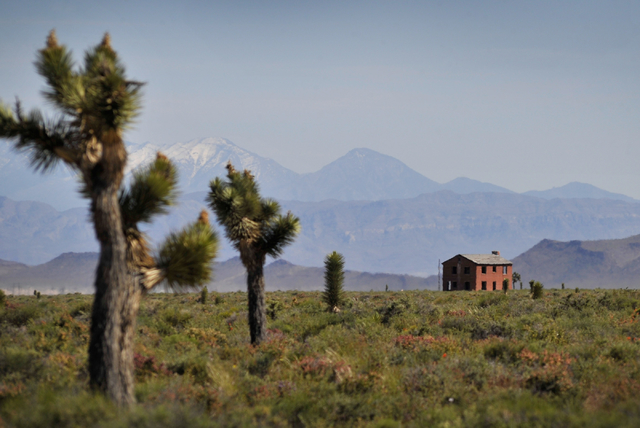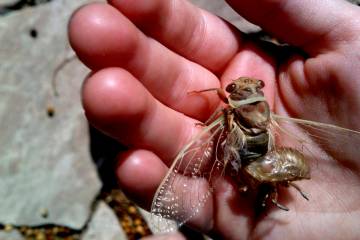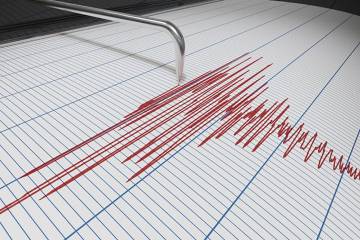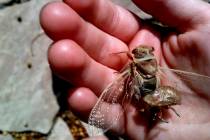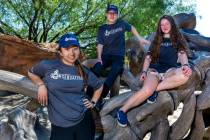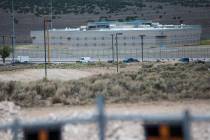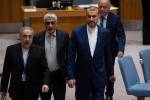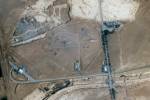Underground explosion tested at former Nevada nuclear test site
Federal researchers reported Wednesday they detonated an underground explosion comparable to nearly 2.5 tons of TNT at a vast former nuclear proving ground in the desert north of Las Vegas.
The U.S. Energy Department’s National Nuclear Security Administration said in a statement the explosion was the sixth in a series designed to test equipment and methods for detecting underground nuclear explosions. Five more blasts are planned over the next two years.
No unexpected damage and no injuries resulted, agency spokesman Dante Pistone said.
Chemical explosives equivalent to 4,850 pounds of TNT were detonated 101 feet underground to allow monitors to collect seismic, optical, acoustic and magnetic data, the statement said.
Detection devices included accelerometers, high-speed video, drones, light detection and ranging sensors, and synthetic aperture radar.
The blast was a fraction of the size of the more than 1,000 nuclear detonations conducted above- and below-ground at the Nevada Test Site from 1951 to 1992. The 1,360-square-mile facility, now called the Nevada National Security Site, is used for experiments and safety training related to the nation’s nuclear stockpile.
Anne Harrington, agency deputy administrator for defense nuclear nonproliferation, called the Source Physics Experiment series important to strengthening U.S. national security.
“These efforts advance technical solutions for treaty monitoring by the United States and its partner nations,” she said.
Conducting the blast near the sites of previous underground nuclear tests allowed researchers to compare seismic waves generated by conventional and nuclear explosions.
“This helps to improve the U.S. capability to differentiate low-yield nuclear test explosions from other seismic activity, such as mining operations and small earthquakes,” the statement said.
The first six experiments were conducted in granite or “hard” rock at different depths and explosive weights, the statement said.
The next round of blasts will be in softer, less structured rock called alluvium.
The experiments are being conducted by researchers from the National Nuclear Security Administration in Nevada; the University of Nevada, Reno and the Desert Research Institute; Lawrence Livermore National Laboratory in California; Los Alamos National Laboratory and Sandia National Laboratories in New Mexico; and the National Oceanic and Atmospheric Administration’s Air Resources Laboratory in Maryland.
Seismic data were to be shared with researchers worldwide on an Incorporated Research Institutions for Seismology website.



